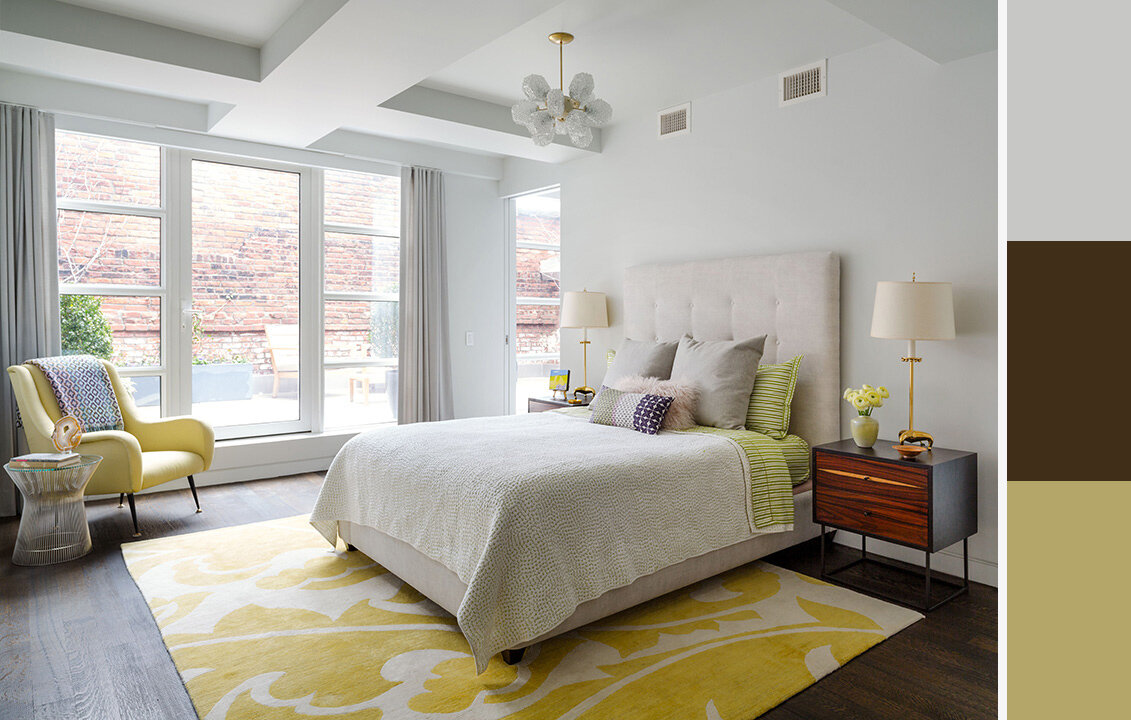We all know and have been told that color is a way we can add personality to our rooms. It’s a way for us to express our individuality and our own unique sense of style. But the thing is, color is difficult to get right –especially if we want to use more than one!
We see all these beautiful interiors on Pinterest and Instagram, and wish it for our own spaces. However, we often don’t know why these combinations of shades and hues work. Unless you’re an interior designer, working with multiple colors in a room can be intimidating. Even more so if you want to incorporate loud, bright, and bold tones. Many end up defaulting to “easier” and “safer” interior color scheme such as sticking to neutral shades, or just using white with one other color.
It doesn’t have to be this way forever. Today, we’re going to let you in on a nice handy rule you can use to create a well-balanced color scheme for your room and interior spaces: the 60-30-10 Rule.
What is the 60-30-10 Rule
The 60-30-10 Rule is a classic design rule used not just for interior design, but also for other disciplines such as marketing, graphic design, and even floral arrangements. It’s used as a template of sorts to create a balanced color palette more easily. As the name implies, you use three colors in at 60-30-10 proportion.
The 60% Color
As it will be holding the largest share of your space, this can be considered your main color. Often people choose neutrals like white or beige for this. But as long as it doesn’t feel overwhelming, dark colors will also work. It all depends what kind of look you’re going for. This color is primarily applied to the walls as it takes up the most amount of space. It can also be used on large rugs, furniture, cabinetry, and flooring. The key thing is that when you look at a room, this will be the dominant color.
The 30% Color
This will be considered as your secondary color and takes up around half the area your main one does, often also complementing it. This is commonly applied to supporting elements in your room such as bed linen, draperies, and accent furniture. However, depending on the size of your space, you can also apply the 30% color to the floor or an accent wall.
The 10% Color
This is the last bit of color we add to our interior space, and it primarily acts as an accent. This can be a bolder or a contrasting color compared to the previous two, and helps break the monotony in a given area. It’s used on smaller decorative items such as throw pillows, small décor pieces, lamps, artwork, and within details of your fabrics.
Bending the Rules
Of course, when it comes to most rules in design, they act more like a guides and suggestions than absolute laws. Design is limitless, and so are the ways you can adapt the 60-30-10 rule to suit your own home. You can vary the proportions of each color to something like 70-25-5 or 60-35-10. If you’re more on the adventurous side, you can have more than one accent color to get a balance like 60-30-5-5. You don’t even have to use three distinctly different colors either. A monochromatic look is also an option by using 3 different shades of the same color for your interior color scheme. Even if it’s a “rule” don’t let it limit your creativity.
Examples of the 60-30-10 Rule
One of the best ways to learn is through examples. Don’t worry. We have you covered. Below we’ll look at some well-designed interior spaces, and go over how it applies the 60-30-10 rule.
White bedroom with dark wood flooring and yellow accents by Wood & Co.
In this bedroom we can easily see how the 60-30-10 rule is applied. The main color is white, which we see on the walls, ceiling, windows, and draperies. The very light cream color of the bed headrest, linen, and lamp shade also count as being part of the main color. This is because, in the context of the whole room, the lightness of the cream is very close to white. You can also think of it as “light neutrals” being the dominant hue in the room. It’s also present in the details of the area rug. The secondary color is the dark wood finish, which is applied to the floor, the bedside tables, and the accent chair’s legs. Lastly, the accent color is yellow. Pastel yellows are used on the arm chair and the rug. Also notice how the lamps and chandeliers have gold stems –more subtle ways to add the accent color in the space. Using this palette, the interior designer was able to create a calm and relaxing space, but still brimming with brightness and personality.
Living room with white oak walls and flooring by Wood & Co.
Unlike the previous example, this living area has its main color both on the walls and floor. It’s also present in the draperies, sides of the arm chairs, and the ottoman seats. The secondary color, blue, is used on large pieces such as the sofa and the area rug. It’s also used on the fireplace to break up the monotony of the wall. Red is then used as the accent color, and is used sparingly. It’s only present on the two arm chairs and on the table décor. Another point of interest in this space is the use of transparent items such as the two lamps and the coffee table. Because they’re see-through, they don’t clash with the existing color scheme.
Adding Color to Your Home
While the 60-30-10 rule isn’t the only way to decide your home or room’s color scheme, it’s still a helpful tip to keep in mind. It can serve as a guide when planning out your interiors. Having an understanding of the basics helps us see where we can add and subtract, and make sure that we keep the visual balance of a space. Also having this knowledge allows us to better communicate our needs with the professionals we hire such as architects, interior designers, builders, and contractors.
As we’ve said earlier, color is a way to express our unique personalities. Our homes being highly personal and intimate spaces, we want to be able to enjoy being in them. Now with a little bit more color knowledge under your belt, you too can have a space that brings your joy every single day.
Thank you for visiting Wood and Co.




